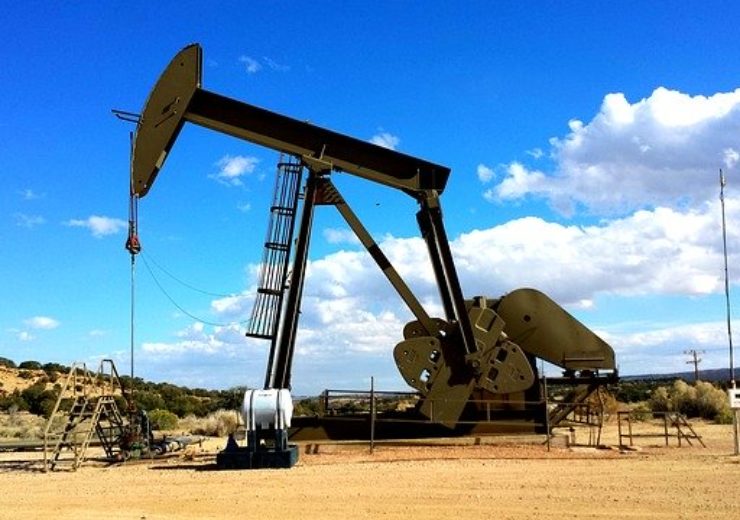Reduction in capital program from US$ 20.7 million to US$ 12 - 13 million with a further reduction of US$ 4.8 million possible, if future conditions dictate

The contingent Maha-2 well at Tartaruga will now be postponed until 2021. (Credit: John R Perry/Pixabay.)
Maha Energy AB (“Maha” or the “Company”) today announced revisions to its 2020 capital program in response to recent commodity price volatility. All dollar amounts are in United States (“US”) dollars, unless otherwise indicated.
Jonas Lindvall, President and Chief Executive Officer of Maha, comments: “As a result of current and foreseeable oil price weakness, we are reducing operating activities and our capital program for 2020. We plan to continue operating at reduced activity levels until there are clear signs of a recovery in oil prices. Despite this planned reduction in capital investment, the 2020 production guidance will not be affected.”
Revised 2020 Capital Program
The 2020 capital budget is revised to a maintenance range of US$ 8 to 12 million and further reductions in operating costs are being implemented. In addition to reducing the costs, Maha is also benefiting from the recent depreciation of the Brazilian Real against the US Dollar. The Brazilian Real has declined 25% versus the US dollar from the original budget estimate. The majority of the operating costs and G&A within Brazil are denominated in Brazilian Reals.
Jonas Lindvall continues: “We are always focused on value. To that end, our team rigorously assess project economics and will not deploy capital if commodity prices do not support sufficient returns. Maha owns and operates producing assets with low declines and low cost structures (OPEX costs in the US$ 5/bbl range), and both the Tartaruga and Tie field will be instrumental in the continued success of Maha.”
The contingent Maha-2 well at Tartaruga will now be postponed until 2021. This will reduce the 2020 capital budget by some US$ 8.3 million. A further possible, but unlikely, future reduction is the Tie-2 water injection well (US$ 4.8 million) at the Tie field. These two projects will have no impact on the 2020 production guidance. The Company will continually assess the current market conditions before a final decision is made on a potential postponement of this well.
Operational Update
Tartaruga
The Company has elected to suspend testing of Maha-1 on Tartaruga for several reasons:
(a) it is becoming increasingly difficult to move specialized stimulation equipment, including explosives, in and out of the Tartaruga location due to reduced Government administrative personnel activity because of the effect of the Coronavirus,
(b) the remaining testing operations cover previously tested and hydrocarbon bearing zones that will become ‘trapped’ behind pipe due to the current Tartaruga Facility +/- 800 BOPD handling limit,
(c) it allows the Company to utilize capital more effectively elsewhere in the organization in response to the low oil prices.
The higher than expected oil rates from the 107D well, which tested at a surface restricted rate of 939 BOPD in February, will more than adequately fill the current production handling capacity at the Tartaruga Facility of approximately 800 BOPD. The Tartaruga facility is currently undergoing an expansion program whereby the facility is upgraded to handle up to 2500 BOPD and 2500 MSCFPD of associated gas. While important subsurface information would be gathered from the well test, little is gained by completing the Maha-1 testing program until such time the Tartaruga Facility is able to handle volumes greater than 800 BOPD.
Tie Field
Despite this planned reduction in capital investment, the Company remain focused on the continued production development of the Tie oil field.
GTE-4
A workover of the GTE-4 well has commenced and is forecasted to be completed before the end of March. GTE-4 was a dually completed free flowing well that has now reached the normal point of needing artificial lift for flow optimization. This well will now be turned into a pumping well and production is expected to resume to above previous production volumes.
Tie South-1 (“TS-1”) and Tie South-2 (“TS-2”)
Final environmental approvals were obtained in February for these two wells. Planning is far advanced, and location preparation work is expected to start in early April. A drilling rig has been located and is currently being contracted. All tangible equipment for these wells has already been purchased. Each well is anticipated to take 40 – 45 days to drill and complete. TS-1 is a near vertical dual producer whilst the TS-2 is planned to be a dual water injector.
Maha will continue with regulatory, planning and land access activities on key future growth projects at the Tie field which have a minimal cost but can take a significant period of time to complete.
Source: Company Press Release
